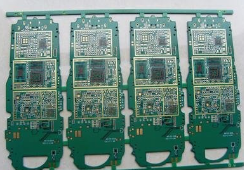The nozzle of the placement machine is an important factor affecting the placement rate, and the causes are divided into internal and external causes.
1: Internal reasons
On the one hand, the vacuum negative pressure is insufficient. The STM nozzle automatically switches the mechanical valve on the placement head before picking up the parts, and it converts from blowing to real suction, which generates a certain negative pressure. When the parts are sucked, the STM negative pressure sensor detects the value When it is within a certain range, the machine is normal, otherwise the suction is bad. Generally, the negative pressure at the suction nozzle from the pick-up position to the placement position should be at least 400mmHg or more. When STM mounts large components, the negative pressure should be more than 70mmHg, so the filter in the vacuum pump should be cleaned regularly to ensure sufficient negative pressure. ; At the same time, the working status of the negative pressure detection sensor should be checked regularly. On the other hand, the STM filter on the placement head and the filter on the suction nozzle are blackened due to contamination and clogging due to the surrounding environment or the impure air source. Therefore, the filter should be replaced regularly. Generally, the filter on the suction nozzle should be replaced at least once every half a month, and the filter on the placement head should be replaced at least once every half a year to ensure unobstructed airflow.

2: External reasons
On the one hand, it is the pressure relief of the STM air supply circuit, such as the aging and rupture of the rubber air pipe, the aging and wear of the seal, and the wear of the suction nozzle after long-term use. On the other hand, it is due to the adhesive or dust in the external environment, especially the paper braid. The large amount of waste generated after the packaged components are cut off causes the suction nozzle to be blocked. Therefore, because the cleanliness of the suction nozzle is checked daily, the pickup of the suction nozzle is monitored at any time, and the suction nozzle that is blocked or poorly picked should be timely Clean or replace to ensure good condition. At the same time, when installing the smt nozzle, it must be installed correctly and firmly, otherwise it will cause damage to the STM nozzle or equipment.
Overview of the mixing process of powder metallurgy density meter and powder metallurgy
Because the pore structure of powder metallurgy has a great influence on the physical properties of powder, and powder metallurgy products are based on their needs based on bulk density, wet density, apparent porosity, oil content, etc. as the main certification standards, so for The density detection of the formed green body and the sintered body is particularly important.
According to the characteristics of the powder metallurgy industry, the specially developed electronic powder metallurgy density meter has been widely used in the powder metallurgy industry. It only takes two steps to directly read the density value, saving a lot of test time; compared with labor costs, one investment can save time and labor costs for up to ten years.
The density of the powder metallurgy density meter is resolved to three decimal places: 0.001. For users in the general powder metallurgy industry, it can meet the density test requirements of most industries. The powder metallurgy density meter can display the following results: density, volume, volume Percentage, maximum density, minimum density, average density, etc.
STM powder metallurgy density meter manufacturers talk about the mixing process of powder metallurgy:
STM powder metallurgy mixing process refers to the process of homogenizing two or more powders with different components. There are basically two mixing methods: STM mechanical method and STM chemical method. The mechanical method is widely used to mix the powder or mixture mechanically without chemical reaction. Mechanical mixing can be divided into dry mixing and wet mixing. Dry mixing is widely used in the production of STM iron-based products; wet mixing is often used to prepare cemented carbide mixtures. Commonly used liquid media for wet mixing are alcohol, gasoline, acetone, water, etc. Chemical mixing is to uniformly mix metal or compound powder with a metal-added salt solution; or all components are mixed in the form of a certain salt solution, and then processed by precipitation, drying and reduction to obtain a uniformly distributed mixture.
STM additives that are often added, plasticizers (gasoline, rubber solution, paraffin, etc.) used to improve the strength of STM compacts or prevent segregation of powder components, and lubricants used to reduce friction between particles and between compacts and mold walls ( Zinc stearate, molybdenum disulfide, etc.).